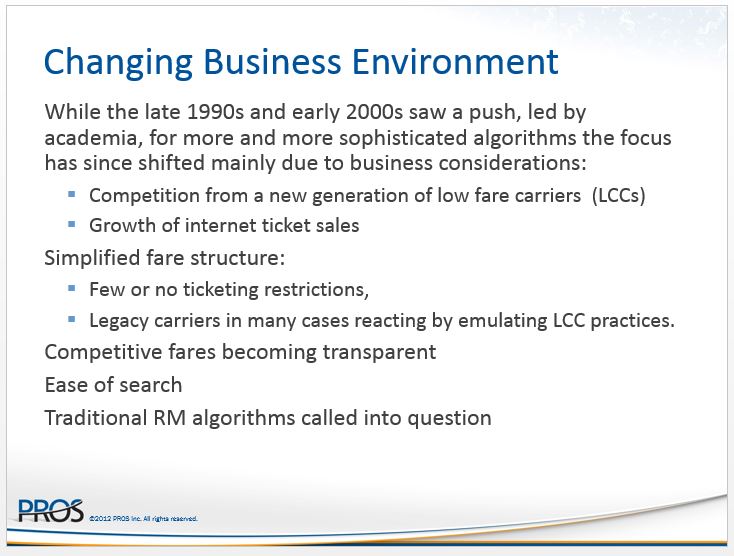| مشخصات مقاله پاورپوینت انگلیسی | |
| عنوان فارسی مقاله | ملاحظات مدل نادرست مدیریت درآمد و بهینه سازی قیمت گذاری |
| عنوان انگلیسی مقاله | Remarks on Model Misspecification in Revenue Management and Pricing Optimization |
| فرمت مقاله | پاورپوینت (PPT یا PPTX) |
| تعداد اسلایدها | 76 اسلاید |
| قابلیت ویرایش | دارد |
| قابلیت پرینت | دارد |
| رشته های مرتبط با این مقاله | مدیریت و اقتصاد |
| گرایش های مرتبط با این مقاله | مدیریت مالی، مدیریت کسب و کار MBA و اقتصاد مالی |
| کد محصول | EP192 |
دانلود رایگان پاورپوینت انگلیسی سفارش ترجمه این پاورپوینت
| تصویری از مقاله |
 |
| بخشی از مقاله |
|
Stochastic and Dynamic Demand As revenue management advanced, at least three major themes evolved. The first was the introduction of time dynamics, replacing fare class demand-to-come estimates with stochastic processes describing fare class arrivals. Beyond providing greater realism, this change brought to light an alternative to nested protection levels for controlling the sale of inventory; a method discussed in more detail in the remaining sections. A second theme was that of capturing network effects. As airlines developed route structures that required passengers to travel on more than one flight, the limitations of leg level models became increasingly clear to practitioners and mathematical modelers alike. For practitioners, the limitations manifested themselves in questions such as “what is the Y class fare on a leg when there are 100 different itineraries drawing upon Y class inventory, each with its own fare?” Mathematical modelers not only saw the need for network models, but devoted considerable effort to the problem while developing important theoretical insights along the way. Just as important were business considerations. For airlines, which often operate under razor-thin profit margins, the quest for fraction-of–a-percentage point improvements in revenue made good sense. Theoretical results as well as simulations were promising since every new class of models was more comprehensive and better reflective of actual customer behavior. While not every airline jumps on the bandwagon of any new theoretical development, models that are dynamic in nature and/or capture network effects explicitly have become accepted worldwide since they deliver promised improvements. Implementation of those run-time consuming methods was in no small measure made possible by the incredible increase in computing power available at little cost, and to better numerical approaches. A third theme was the development of better demand models, as was touched upon in Section 1.2.4. In the remainder of this section we address each of these topics in more detail. In contrast to the first two themes, the development of the demand models was mainly driven by airlines suffering losses due to shifts in passenger buying behavior caused by several factors. We will have more to say about this phenomenon in Section |
دانلود رایگان پاورپوینت انگلیسی سفارش ترجمه این پاورپوینت